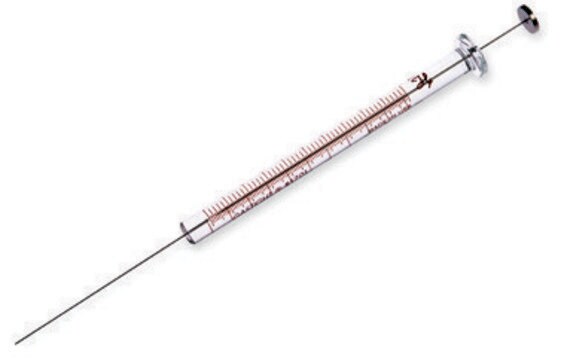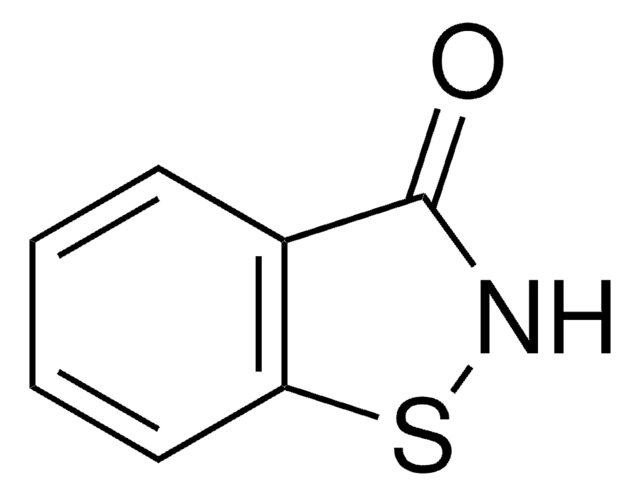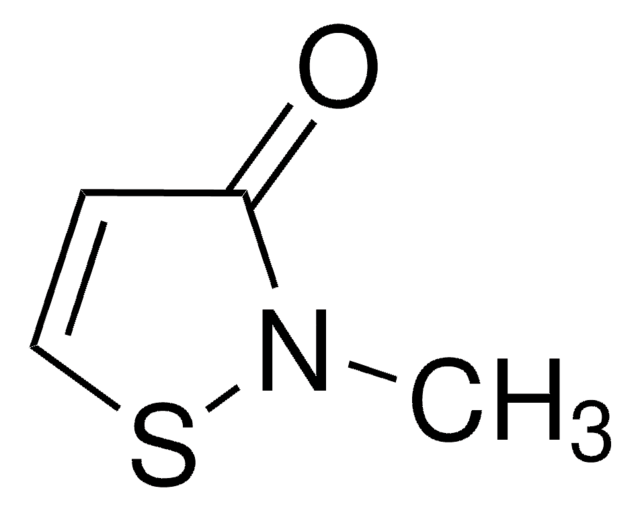34392
Methyldibromoglutaronitrile
analytical standard
Sinonimo/i:
1,2-Dibromo-2,4-dicyanobutane, 1-Bromo-1-(bromomethyl)-1,3-propanedicarbonitrile, 2-Bromo-2-(bromomethyl)glutaronitrile
About This Item
Prodotti consigliati
Grado
analytical standard
Livello qualitativo
Durata
limited shelf life, expiry date on the label
tecniche
HPLC: suitable
gas chromatography (GC): suitable
Punto di fusione
51-55 °C
applicazioni
environmental
Formato
neat
Temperatura di conservazione
2-8°C
Stringa SMILE
BrCC(Br)(CCC#N)C#N
InChI
1S/C6H6Br2N2/c7-4-6(8,5-10)2-1-3-9/h1-2,4H2
DHVLDKHFGIVEIP-UHFFFAOYSA-N
Descrizione generale
Applicazioni
Prodotti consigliati
Avvertenze
Danger
Indicazioni di pericolo
Classi di pericolo
Acute Tox. 4 Oral - Skin Corr. 1B
Codice della classe di stoccaggio
8A - Combustible corrosive hazardous materials
Classe di pericolosità dell'acqua (WGK)
WGK 2
Punto d’infiammabilità (°F)
Not applicable
Punto d’infiammabilità (°C)
Not applicable
Dispositivi di protezione individuale
Eyeshields, Faceshields, Gloves, type P3 (EN 143) respirator cartridges
Scegli una delle versioni più recenti:
Possiedi già questo prodotto?
I documenti relativi ai prodotti acquistati recentemente sono disponibili nell’Archivio dei documenti.
Il team dei nostri ricercatori vanta grande esperienza in tutte le aree della ricerca quali Life Science, scienza dei materiali, sintesi chimica, cromatografia, discipline analitiche, ecc..
Contatta l'Assistenza Tecnica.


![Benzo[a]pyrene-d12 98 atom % D](/deepweb/assets/sigmaaldrich/product/structures/962/892/b867e1bb-083c-4337-b499-36eae87f40ad/640/b867e1bb-083c-4337-b499-36eae87f40ad.png)





![Benzo[a]pyrene ≥96% (HPLC)](/deepweb/assets/sigmaaldrich/product/structures/253/820/be96d879-1811-46c0-8f11-612019691c2d/640/be96d879-1811-46c0-8f11-612019691c2d.png)

